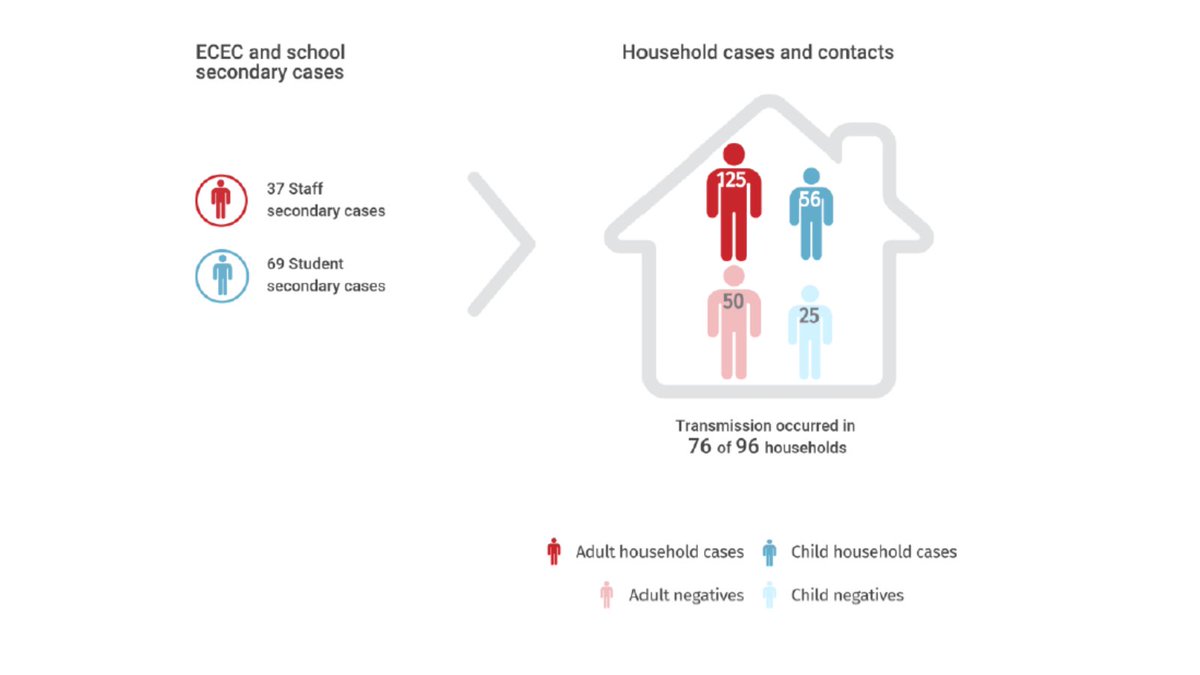
The study we've all been waiting for
Using data from >50,000 #COVID19 contacts, vaccinated people are less infectious EVEN with Delta, and EVEN if CT count is the same
Also, kids appear less infectious and less susceptible, including with Delta
1/
medrxiv.org/content/10.110…
Using data from >50,000 #COVID19 contacts, vaccinated people are less infectious EVEN with Delta, and EVEN if CT count is the same
Also, kids appear less infectious and less susceptible, including with Delta
1/
medrxiv.org/content/10.110…
The effects of vaccination on reducing infectiousness are strongest earlier on and wane slightly with time
Somewhat less effective for Delta than Alpha
Effects on reducing susceptibility to infection appear stronger and remain quite well preserved, with some waning
2/
Somewhat less effective for Delta than Alpha
Effects on reducing susceptibility to infection appear stronger and remain quite well preserved, with some waning
2/

Data also clearly shows an age dependent effect
-Much lower rates of secondary infection from child index cases
-Mower secondary infection in child contacts
This remains true across settings including education, except "Events / activities" (?nature of contact)
3/
-Much lower rates of secondary infection from child index cases
-Mower secondary infection in child contacts
This remains true across settings including education, except "Events / activities" (?nature of contact)
3/

Importantly, adjusting for differences in CT count did not explain differences in rates of transmission between vaccinated and unvaccinated individuals
Using CT as a proxy for infectiousness in vaccinated vs unvaccinated will OVERESTIMATE how infectious vaccinated people are
4/
Using CT as a proxy for infectiousness in vaccinated vs unvaccinated will OVERESTIMATE how infectious vaccinated people are
4/

Interestingly, given equivalent CT counts at the higher end (lower VL) people with Delta are more infectious than with Alpha
This suggests the virus itself is more infectious, not just as a factor of viral load dynamics
5/
This suggests the virus itself is more infectious, not just as a factor of viral load dynamics
5/

This is contact tracing data including those who were tested by PCR within 1 - 10d of the index case testing positive
It is possible cases were missed - however this is unlikely to effect the proportions significantly as the denominator is those "tested" not those "exposed"
6/
It is possible cases were missed - however this is unlikely to effect the proportions significantly as the denominator is those "tested" not those "exposed"
6/
We can finally put to bed the myth that vaccinated people are just as infectious as unvaccinated infected with Delta
Also good evidence of children being less infectious and less susceptible
Great study with very important results
7/
Also good evidence of children being less infectious and less susceptible
Great study with very important results
7/
• • •
Missing some Tweet in this thread? You can try to
force a refresh










